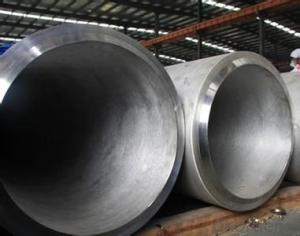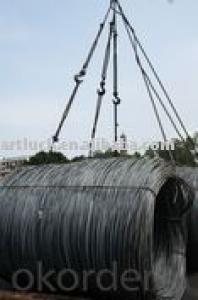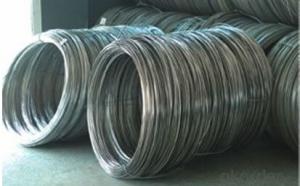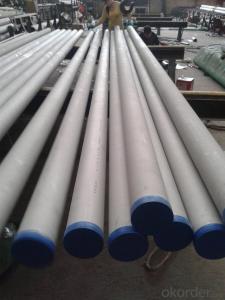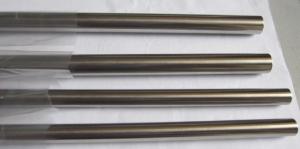Stainless Steel Brazing Rods
Stainless Steel Brazing Rods Related Searches
Best Paint For Stainless Steel Blanket Insulation For Steel Buildings Primer For Galvanized Steel Foam Filter For Stainless Steel H S Code For Stainless Steel Surface Grinding Wheels For Stainless Steel Surface Grinding Wheels For Hardened Steel Hole Saw For Stainless Steel Paint For Stainless Steel Stainless Steel For BbqHot Searches
Steel Mesh Panels For Sale Price For Stainless Steel Scrap Scrap Price For Stainless Steel Price For Stainless Steel Stainless Steel Tank For Sale Stainless Steel Sheets For Sale Cheap High Tea Sets For Sale Stainless Steel Tanks For Sale Stainless Steel For Sale High Density Fiberboard For Sale Solar Hot Water Collectors For Sale Scaffolding For Sale In Uae Scaffolding For Sale In Ireland Scaffolding For Sale In Houston Type Of Inverter For Solar Price Of Shipping Containers For Sale Types Of Inverter For Solar Stock Price For Aluminum Used Solar Inverter For Sale Steel Mesh Panels For SaleStainless Steel Brazing Rods Supplier & Manufacturer from China
Okorder.com is a professional Stainless Steel Brazing Rods supplier & manufacturer, offers integrated one-stop services including real-time quoting and online cargo tracking. We are funded by CNBM Group, a Fortune 500 enterprise and the largest Stainless Steel Brazing Rods firm in China.Hot Products
FAQ
- No, stainless steel pipes cannot be electroplated. Electroplating is a process by which a layer of metal is deposited onto a conductive surface using an electric current. However, stainless steel is already a corrosion-resistant material due to its composition of chromium, which forms a protective layer on its surface. Because of this, stainless steel pipes do not require electroplating as they already possess the desired properties of durability and resistance to corrosion.
- The common standards for stainless steel pipes vary depending on the specific application and industry. However, there are several widely recognized standards that are commonly used in the manufacturing and specification of stainless steel pipes. One of the most widely used standards is ASTM International, which sets the standards for various materials, including stainless steel. ASTM A312/A312M is the standard specification for seamless, welded, and heavily cold worked austenitic stainless steel pipes. This standard covers a wide range of pipe sizes and grades, including TP304, TP316, TP321, and more. Another commonly referenced standard is the American National Standards Institute (ANSI) standards. ANSI B36.19 specifies the dimensions, tolerances, and materials for stainless steel pipes. This standard covers both seamless and welded stainless steel pipes and includes a range of sizes and schedules. In addition to these standards, there are also specific standards for certain industries. For example, the American Petroleum Institute (API) has standards such as API 5L for line pipes used in the oil and gas industry. These standards outline the requirements for materials, dimensions, and testing for stainless steel pipes used in specific applications. Other standards organizations, such as the International Organization for Standardization (ISO) and the European Committee for Standardization (EN), also provide standards for stainless steel pipes. ISO 1127, for example, specifies the dimensions and tolerances for stainless steel pipes used in general purposes. It is important to note that these standards are continuously updated and revised based on technological advancements and industry needs. Therefore, it is crucial to consult the latest versions of these standards to ensure compliance and quality in the manufacturing and use of stainless steel pipes.
- Indeed, natural gas systems can utilize stainless steel pipes. Given its exceptional resistance to corrosion and ability to withstand elevated pressure and temperature levels, stainless steel emerges as a fitting material for the transportation of natural gas. Additionally, the flawlessly smooth inner surface of stainless steel pipes facilitates efficient gas flow, thereby reducing the likelihood of blockages or obstructions. Nevertheless, it remains crucial to guarantee that the stainless steel pipes employed adhere to the precise standards and codes mandated for natural gas systems, in order to ensure both safety and compliance.
- Yes, stainless steel pipes are highly suitable for power generation facilities. They offer excellent resistance to corrosion, high temperature, and pressure, making them ideal for transporting various fluids and gases in power plants. Stainless steel pipes also have exceptional strength and durability, ensuring a long lifespan and low maintenance costs. Additionally, their smooth internal surface reduces friction and minimizes energy loss, enhancing the overall efficiency of power generation systems.
- The main difference between 410 and 316 stainless steel pipes lies in their chemical composition and their intended applications. 410 stainless steel is a martensitic stainless steel, which means it has a high carbon content (between 0.15% and 0.25%) and a relatively low chromium content (between 11.5% and 13.5%). This composition gives 410 stainless steel pipes excellent strength, hardness, and wear resistance. It is often used in applications where corrosion resistance is not the primary concern, such as in cutting tools, knives, and firearm components. On the other hand, 316 stainless steel is an austenitic stainless steel with a higher chromium content (between 16% and 18%) and a significant amount of nickel (between 10% and 14%). This composition gives 316 stainless steel pipes excellent corrosion resistance, especially in environments with chlorides or other corrosive agents. It is widely used in industries such as chemical processing, pharmaceuticals, food processing, and marine applications. In summary, the main difference between 410 and 316 stainless steel pipes is their chemical composition and the resulting properties. 410 stainless steel offers superior strength and hardness but has lower corrosion resistance compared to 316 stainless steel, which is highly corrosion resistant but may have slightly lower strength and hardness. The choice between the two depends on the specific requirements of the application, with 410 stainless steel being more suitable for applications where strength and wear resistance are crucial, and 316 stainless steel being preferred for applications requiring excellent corrosion resistance.
- Yes, stainless steel pipes can be coated with epoxy. Epoxy coating provides excellent corrosion resistance and can be applied to stainless steel pipes to enhance their durability and protect against various environmental factors.
- There are several different types of stainless steel pipe finishes, each providing a unique appearance and level of corrosion resistance. 1. Mill Finish: This is the standard finish for stainless steel pipes straight from the mill. It has a dull and non-reflective surface, making it suitable for applications where aesthetics are not a priority. 2. Brushed Finish: Also known as satin finish, this type of finish is achieved by brushing the surface of the stainless steel pipe with a fine abrasive material. It creates a consistent linear grain pattern, giving the pipe a smooth and elegant appearance. 3. Mirror Finish: This finish is achieved by polishing the stainless steel pipe to a highly reflective surface. It is commonly used in decorative applications, such as handrails and architectural elements, where a shiny and aesthetically-pleasing appearance is desired. 4. Polished Finish: Similar to mirror finish, polished finish involves buffing the surface of the stainless steel pipe to a high shine. However, it does not achieve the same level of reflection as mirror finish, making it more suitable for industrial or commercial applications. 5. Satin Finish: Satin finish is a type of brushed finish with a low sheen and smooth texture. It provides a subtle, sophisticated appearance and is often used in applications where a matte finish is desired, such as in kitchen appliances or automotive parts. 6. Bead Blasted Finish: This finish is achieved by bombarding the surface of the stainless steel pipe with small glass beads at high pressure. It creates a uniform and non-directional texture, giving the pipe a matte, frosted appearance. Bead blasted finish is commonly used in architectural and decorative applications. Each of these stainless steel pipe finishes has its own advantages and is chosen based on the specific requirements of the application, such as aesthetics, corrosion resistance, and ease of maintenance.
- Both stainless steel pipes and fiberglass-reinforced pipes are popular options for a range of uses. However, they possess distinct qualities that differentiate them from each other. To begin with, stainless steel pipes are renowned for their exceptional durability and strength. They can endure high pressure, temperature, and corrosion, making them suitable for industrial and heavy-duty applications such as oil and gas, chemical processing, and plumbing systems. Additionally, stainless steel pipes are non-combustible and have a lengthy lifespan, reducing the need for frequent replacements. In contrast, fiberglass-reinforced pipes (FRP) offer unique advantages in specific circumstances. FRP pipes are lightweight and possess excellent chemical resistance, making them ideal for use in corrosive environments like wastewater treatment plants, desalination facilities, and chemical processing plants. Moreover, FRP pipes outperform stainless steel pipes in terms of insulation properties, which can be advantageous in situations requiring thermal insulation. In terms of cost, stainless steel pipes generally carry a higher price tag compared to fiberglass-reinforced pipes. However, it is crucial to consider the project's specific requirements and the expected lifespan of the pipes when assessing overall cost-effectiveness. Ultimately, the choice between stainless steel pipes and fiberglass-reinforced pipes hinges on the particular needs of the application. If durability, strength, and resistance to high pressure and temperature are the primary considerations, stainless steel pipes are the preferred option. Conversely, if factors such as weight, corrosion resistance, and insulation properties take precedence, fiberglass-reinforced pipes may prove to be the superior choice.

















